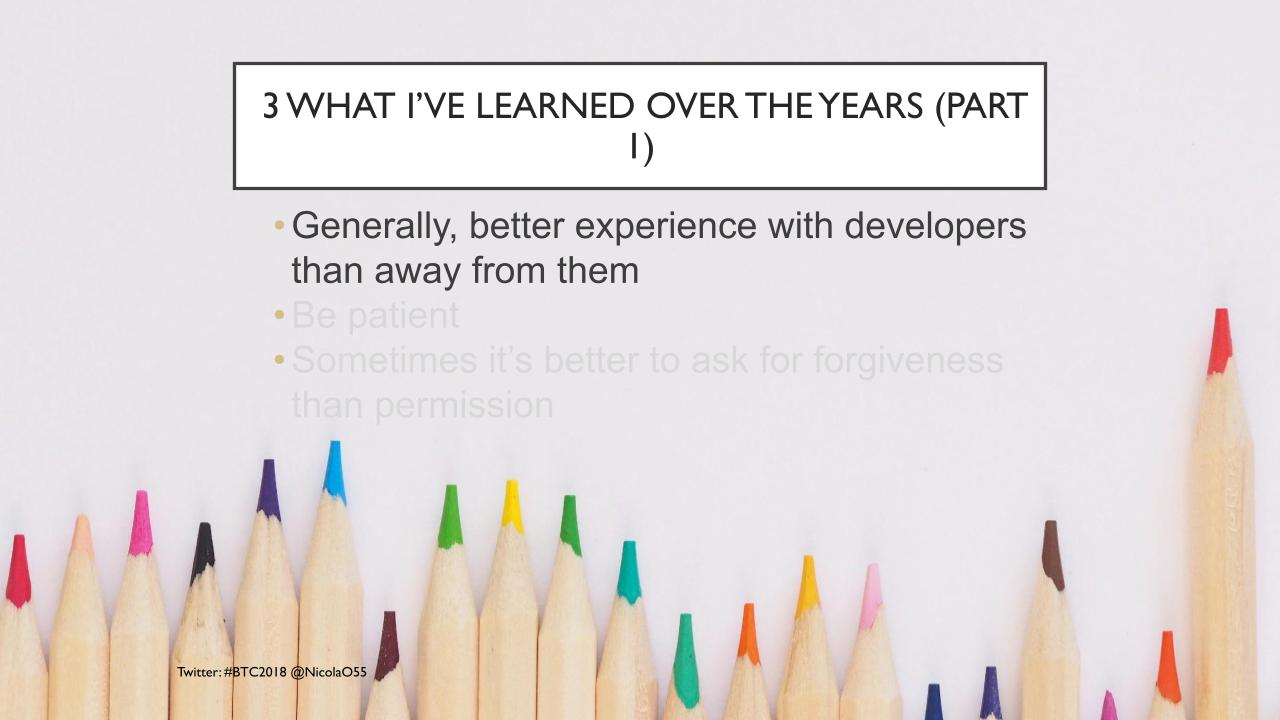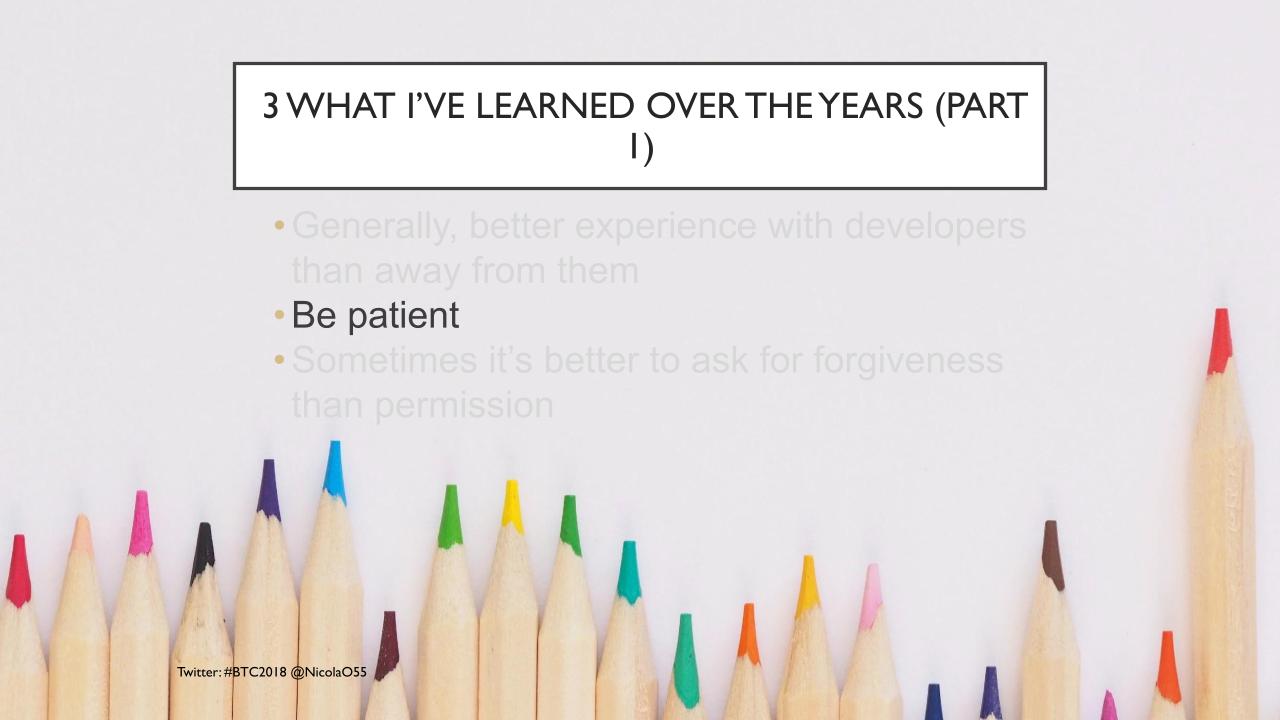11 Public Speaking Tips That You Might Not Know
I remember when I first came across a really good public speaker.
Not just really good.
But really good.
It was at my first year of high school and someone from Toastmasters came to talk about something.
To be honest, I don’t remember what they talked about but I do remember thinking she had a gift and I could never become as good as her.
I’m still not.
But, I do have a much better understanding of what makes a good public speaker since I was an active member of Toastmasters for around seven years and I’ve spoken at a lot of conferences.
In this blog post, I want to share public speaking tips you might not have heard of and the reasoning behind it. I’m also going to do my best to make them actionable by explaining how you can implement them.
1. Tailor your talk to the audience.
When you are delivering a talk, you want the attendees to feel like they’re with you on the journey; you want them to feel included.
Tailoring your talk to the audience is an effective way to do that as it helps you connect with them.
There are a few ways you can do this.
One effective way I’ve seen it done was by Dylan Beattie when he gave a talk at a conference here in Sweden. He used Swedish examples, which went down well with a mostly-Swedish audience.
I also did this for my Testing Against Implicit Requirements talk for the Software Testing Karlsruhe meetup. I included a live demo of me explaining what the implicit requirements could be on Xing, a Hamburg-based career-focussed social network.
Aside from using sites as examples in your presentation, you can also use current affairs of the place you are in. You can do this if you believe your audience is likely to be aware of these affairs, and then weave them into your presentation.
2. In slides, highlight the point you are talking about now.
A lot of people know that it’s good to have less words on a slide.
But there are times where you may want to provide some context of where you are, so you don’t want to have just your current point on the current slide.
However, you also want to limit noise. (Therefore you probably don’t want to have a series of bullet points on your slide that you go through one by one.)
Mark Winteringham drew my attention to a great presentation by Melinda Seckington on The Art of Slide Design.
In this presentation, Melinda Seckington explains how you can limit noise and increase signal (highlighting the point you are talking about now, is one way you can do this.)
Here are some example slides from my “What I Wish I Knew In My First Year of Testing” talk, that I gave in Belgrade Testing Conference 2018.



3. When you are asked questions by the audience, repeat back the question so everyone else can hear it (instead of going straight to answering the question).
The amount of times I’ve been confused as an attendee because the speaker did not do this is too damn high!
I have to admit though, I actually only learned to do this after a few years of public speaking.
This can be hard to remember because you, as a speaker, can hear the question, so might not think the audience can’t hear it.
But remember that the question-asker is directing their voice towards the speaker, not towards the audience, when they ask the question. This is especially problematic when the question-asker is at the front of the audience.
4. Do a call back
You can do a call back to something earlier in your presentation.
You could even do a call back to a previous talk at the event. If you’re going to do this, I suggest you stick to doing this at a single-track conference because you risk excluding or confusing people by doing this at a multi-track conference since not all of the attendees might not have attended that talk.
Doing a call back is a popular technique in comedy as well.
5. Involve the audience
A few ways you can do this is to ask for a show of hands or get people to stand up.
Here are some examples of what I have done in the past and what I have seen others do in the past, to involve the audience:
- At the start of a talk, ask everyone to stand up and introduce themselves to the person next to them.
- During a talk, ask everyone a question and get them to write their answer down on a piece of paper (which is provided beforehand).
- Ask the audience, “Raise your hand if you’ve ever _________”
This technique is effective because it engages people; it draws them in.
It’s easy to just lean on your chair, and start to look at your phone or wonder what you’ll have for dinner if you’re not engaged.
But involving the audience gets people to do something.
Therefore, involving the audience keeps them right there with you.
6. Utilise silence
A few times I’ve written in my speech notes, pause for dramatic effect.
Silence can help something sink in.
A few ways in which you can use this:
- When you say a surpising, shocking fact. e.g. “Ducks can sleep with one eye open”
- When you want to build suspense while you are telling a story
7. How you can be intentionally funny
I think being intentionally funny is rather difficult.
I’ve made people laugh a lot without trying, but doing it on purpose?
That’s a whole new ballgame.
At Toastmasters, I did an advanced manual on Humorous Speeches where I had key objectives for each talk to “pass”. For all of the five speeches, I had to make people laugh.
No pressure.
My first one went absolutely horrible and I got feedback on how I wasn’t funny and should’ve picked a different manual. (I actually had to go to the bathroom after that, to calm down, you see I used to take Toastmasters very seriously.)
But over time, I’ve learned how to be funny, on purpose.
Here are two ways you can go about it:
-
Exaggeration. For example; let’s say your automated test suite takes a long time to run. You could say my tests are so slow that it’d be faster to run them manually.
-
Use the element of surprise Lead (or misdirect) the audience somewhere then BOOM! You can use the rule of 3 here: Expected, expected, unexpected.
8. You can use your clicker to turn the screen off.
Assuming you have a clicker and you are giving an in-person presentation, you can turn the screen off with your clicker.
This ensures the audience’s attention is focused on YOU and not on your slides.
9. If possible, walk around the room amongst the audience.
Having the audience have to move/turn to follow you - can help them stay more engaged.
You won’t always have the option to do this, depending on your microphone setup and if you’re giving a recorded talk.
This technique can also help you feel more exposed because by walking among the audience it removes the division between you and them, that the stage area can provide.
Lastly, this technique can be scary if you are relying on speaker notes, that tend to be on a screen at a podium or on the floor.
I don’t often deploy this tactic as I am a very nervous speaker, but when I’m feeling good that day, you might see me walking a bit further than usual. :)
10. Prioritise practicing your introduction and your conclusion
I’ve found this especially helpful as a nervous speaker.
While, I do practice my whole talk multiple times. I don’t actually dedicate an equal amount of time to each part of my talk.
Most of time is spent on the introduction because it helps draw people in and it helps me deal with my nerves so I can get settled as I am speaking.
Second, I focus on the conclusion as I know the recency effect applies, I want the audience to leave with a good impression.
Lastly, the middle. I find this part tends to sort it self out if the introduction and conclusion are strong enough. I may spend extra time practicing some parts of the middle that I am struggling with however.
11. Make sure your talk has a key purpose and centre your presentation around that.
There are a few key purposes that your talk may have, including:
- To inform? ℹ️
- To entertain 😆
- To persuade 💭
- To inspire 🗻
Personally, I prefer giving talks that inform.
If you have seen any of my previous talks, you may notice that I like the attendees to learn something in my talks; ideally something concrete that could be applied to work.
I guess to a certain extent, my hope is to inspire the attendees as well - inspire them to take action.
Having a key purpose really helps you structure and focus your talk.
Pick a direction, and find a landmark you can keep constantly before you.
If you’re about to speak at your first conference, check out my beginners guide to speaking at conferences.